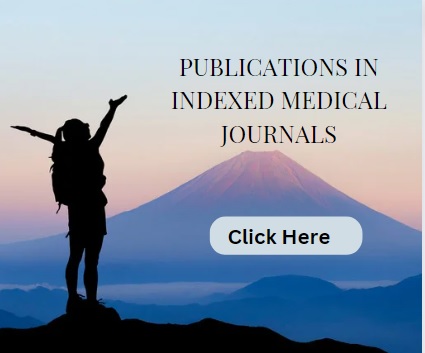Microbiology
Publications
Special Article
Research Topics
Microbiology Thesis Topics For MD/DNB

Remember Subscribing to the premium thesis topics not only will enable you to browse through premium thesis topics but also you will get access to online guidance about synopsis writing, sample size calculation, inclusion and exclusion criteria and guidance throughout thesis writing. In case you dont subscribe still do not hesitate to contact me for guidance.
- Below is the list of 100 free thesis topics for MD/DNB Microbiology. You can select any good Microbiology thesis topics for MD/DNB from here. For more thesis topics you can avail the service of premium thesis topics. The premium thesis topics include list of 2000+ Microbiology thesis topics as well as recent topics which has been published in various national and international Microbiology journals.
- Bacteriological study in suspected neonatal septicaemia
- Role of fine needle aspiration cytology in the diagnosis of tuberculous lymphadenitis and the utility of ziehl neelsen staining
- Prevalence of extended spectrum beta lactamases from various clinical samples
- Study of bacterial vaginosis in women of reproductive age by pH determination, direct gram stain and giemsa stain of vaginal discharge.
- An assessment of the carcinogenicity of various infant milk formulae by microbiological and biochemical methods
- Bacterial profile and their antibiotic susceptibility pattern in clinically diagnosed urinary tract infections
- Microbial profile of aural discharges (otorrhoea) & antimicrobial susceptibility pattern of the common isolates
- Study of susceptibility pattern of mycobacterial isolates from patients of pulmonary tuberculosis
- Study of detection of human rotavirus in stool specimen by Elisa technique & association of enteric pathogens in childhood diarrhoea
- A comparative antimicrobial analysis of various root canal irrigating solutions on endodontic pathogens: in – vitro study
- Microbial etiological agents in chronic periodontitis
- Identification of fungal infections in suspected clinical samples of superficial fungal infection and anti-fungal susceptibility testing
- Serodiagnosis of dengue antibodies in suspected cases of dengue fever by Elisa technique
- Comparative study of the prevalence of intestinal parasites in HIV-reactive and non-reactive individuals
- Incidence of health care associated infection and antibiotic resistance of isolates in critical care patients of a tertiary care hospital
- Isolation and identification of Acinetobacter species with special reference to antibiotic resistance
- “Isolation and identification of mycobacterium tuberculosis from suspected cases of pulmonary tuberculosis and detection of multi-drug resistance tuberculosis”
- Incidence of sepsis in the neonates admitted to a tertiary care hospital and antimicrobial susceptibility pattern of the isolates
- “To compare the microbial colonization and patient’s comfort with absorbable and non-absorbable suture material in extraction socket suturing”.
- “To evaluate efficacy of manuka honey dressing in the treatment of infected socket”.
- “Documentation of the spectrum of microbiological flora and their antibiotic sensitivity in oral infections in local population in a tertiary care medical hospital.
- “Prospective study of anaerobic isolates from deep-seated wound infections encountered in a tertiary care hospital”
- “Spectrum and prevalence of fungi in soft tissue infections in a tertiary care hospital”
- “Isolation of bacteria in acute diarrheal diseases in paediatric age group of patients attending to a tertiary care hospital and antimicrobial susceptibility pattern of the isolates”
- “Comparison of efficacies of 5% povidone iodine solution and 0.2% chlorhexidine solution in controlling bacteraemia in patients undergoing surgical removal of mandibular third molar.”
- The isolation and identification of nonfermenting organisms and their antibiogram from clinical samples in a tertiary care hospital
- To isolate and identify the b- lactamases in Enterobacteriaceae among community acquired infections in a tertiary care hospital.
- Antibiotic resistance pattern of bacteria, isolated from cases of ventilator associated pneumonia in a tertiary care hospital
- A study of risk factors, occurrence and etiology of catheter associated urinary tract infections in criteria care unit of a tertiary care medical hospital.
- Role of nitric oxide in pathogenesis of dengue fever
- ‘’phenotypic and genotypic characterization of multidrug resistant uropathogenic E. coli”
- Evaluation of phenotypic and genotypic method for the detection of ESBL and MBL in germ negative bacilli isolated from clinical specimens
- Epidemiology of MDR tuberculosis in a tertiary care hospital with special reference to rapid molecular diagnostic methods.
- Study of epidemiological markers of pseudomonas aeruginosa isolated from various clinical samples received in tertiary care hospitals, India
- Morphological and genotypic characterization of candida albicans isolated from clinical samples from a tertiary care hospital
- Effect of extraction of different types of medicinal plants on ringworm
- Microbiological and antibiotic profile of pus samples collected in a tertiary care centre.
- Microbial profile & antibiogram pattern of bacterial isolates of urinary tract infection in pregnant women in tertiary care centre
- Neonatal sepsis: bacteriological profile and antibiotic sensitivity pattern of isolates in a tertiary care setup
- An assessment of minocycline sensitivity in multidrug-resistant gram-negative isolates in a tertiary care centre.
- A study based on catheter-related bloodstream
- Infections in intensive care units (ICU) in a tertiary care hospital
- Cross sectional study to determine sero-prevalence of brucellosis and pattern of haematological, biochemical and immunological parameters in patients with febrile illness
- Molecular characterization of extended spectrum of β lactamases producing hospital and community acquired klebsiella pneumoniae infections.
- Epidemiological profile and genotypic characterization of multidrug-resistant (MDR) and extensively drug-resistant (XDR) tuberculosis.
- Molecular epidemiology and genetic diversity” of circulating sars-cov-2 in a tertiary care medical hospital.
- Correlation between clinical features and immunological parameters with viral load in covid positive patients
- Study of colistin susceptibility and clinical profile of CRAB and CRE isolates from tertiary care hospital
- Evaluation of rapid diagnostic method for molecular characterization of MDR genes from mycobacterium tuberculosis isolates from western part of India
- A study on culture-based screening of aerobic microbial flora in chronic leg ulcers.
- A study of microbial profile of bloodstream infections in critical care units in a tertiary care hospital
- Prevalence and molecular characterisation of carbapenem resistant pseudomonas aeruginosa in the critical areas of a tertiary care centre.
- Assessing effectiveness of cheap and practical ways of sputum disinfection for pulmonary tuberculosis patients in home scenario.
- Prevalence of ESBL, AMPC and carbapenems among Enterobacteriaceae.
- Comparative evaluation of latex agglutination with phenotypic methods for detection of methicillin-resistant staphylococcus aureus.
- Surveillance of catheter related blood stream infections among adult patients in ICU.
- Study of antibiogram of staphylococcus aureus in correlation with expression of surface proteins in a tertiary care hospital
- Isolation, characterization and antibiotic susceptibility pattern in enterococci with special reference to vancomycin resistance.
- Isolation speciation & antibiotic susceptibility pattern of enterococci from various clinical samples at a tertiary care medical hospital.
- Seroprevalence of IgM rubella in antenatal women with bad obstetric history in a tertiary care hospital
- A study on coagulase negative staphylococci at a tertiary care teaching hospital
- Isolation, identification and study of virulence factors of uropathogenic escherichia coli in association with fluoroquinolone resistance in urinary tract infections.
- A study on blood culture isolates in paediatric patients at a tertiary care teaching hospital.
- Isolation, identification and speciation of non-fermenting gram negative bacilli from various clinical samples and their antibiotic susceptibility pattern
- Spectrum of opportunistic infections and profile of CD4 count among HIV/AIDS patients encountered in a tertiary care hospital.
- Vancomycin susceptibility of methicillin resistant staphylococcus aureus isolated from clinical specimens and its clinical outcome in vancomycin treated patients attending a tertiary care hospital.
- Prospective study of microbiological diagnosis and treatment outcome of keratitis in a tertiary care hospital
- Microbiological study of vaginitis among women of reproductive age group
- Serological profile of hepatitis b vaccinated persons with special reference to quantitation of anti-HBS antibodies titres
- Comparative study of Koch and calcofluor white staining, speciation & antifungal susceptibility of Malassezia species.
- Detection of fluoroquinolone resistance among enteric fever isolates by disk diffusion, agar dilution, and e-test – a comparative study.
- Comparative study of IgM ELISA and rapid diagnostic test in clinically suspected cases of scrub typhus.
- Comparative analysis of non-structural protein 1 antigen detection by immunochromatography and enzyme linked immunosorbent assay for the diagnosis of acute dengue infection.
- Device associated nosocomial infection in intensive care unit.
- A case control study of risk factors for infections with extended spectrum beta lactamase and AMPC producing escherichia coli and klebsiella species.
- Speciation and antifungal susceptibility testing of candida isolated from various clinical specimens using chrome agar candida and conventional methods.
- Phenotypic detection of ESBL, AMPC & carbapenemase producing clinical isolates of E. coli and klebsiella pneumoniae
- Characterisation and antimicrobial susceptibility pattern with special reference to vancomycin resistance in various clinical isolates of enterococci.
- Comparative evaluation of phenotypic methods of ESBL detection in clinical isolates of E. coli
- Study of the bacteriological profile of neonatal septicaemia and associated risk factors
- Study of in vitro efficacy of colistin on clinical isolates of multidrug resistant gram-negative bacilli
- Determination of susceptibility of clinical isolates of methicillin resistant staphylococci to glycopeptides, oxazolidinones, streptogramins.
- Ventilator associated tracheobronchitis: incidence, etiology, predisposing risk factors and drug resistance
- Clinico bacteriological study of neonatal septicaemia with special reference to c-reactive protein and drug resistance
- Study of bacteriological profile and antibiotic susceptibility pattern of wound infections in a tertiary care hospital.
- A prospective study on catheter associated urinary tract infections in ICU patients of a tertiary care hospital.
- Bacteriological study (aerobic) of central venous catheter (CVC) related bloodstream infection in ICU patients at a tertiary care hospital.
- Speciation of candida isolates from clinical samples: a comparison of two carbohydrate assimilation methods for efficacy, speed and accuracy with special reference to the sensitivity to commonly used antifungal agents
- Isolation and characteristics of shigella from diarrheal stool samples received in a tertiary care hospital and determination of antimicrobial susceptibility.
- Isolation and identification of Acinetobacter species from broncho -alveolar lavage samples from patients in the intensive & critical care units and determination of its mic to colistin in a tertiary care hospital
- Comparison of colorimetric assay for pyrazinamide susceptibility testing using nicotinamide for mycobacterium tuberculosis with manual mycobacterium growth indicator tube (MGIT) assay
- Comparative evaluation of dark field microscopy and IgM ELISA in the diagnosis of leptospiral infection from suspected clinical cases in a tertiary care hospital
- A study to evaluate patterns of candida colonization in very low birth weight neonates and role of chlorhexidine skin cleansing in preventing candidemia
- A study to evaluate the effect of nargenicin – a novel anti-bacterial agent against clinically isolated gram-positive bacteria.
- Isolation and speciation of candida in various clinical specimens and their antifungal susceptibility patterns in a medical college.
- Prevalence, bacteriological profile and antibiotic susceptibility pattern of symptomatic and asymptomatic bacteriuria during pregnancy
- Bacteriological profile and antibiotic sensitivity testing of diabetic foot infections at a research centre.
- Microbiological study of burn wound infections, antibiogram and metallo-beta-lactamase detection in gram negative isolates
- Study of prevalence of bacterial vaginosis in women attending a tertiary care medical hospital.
- Culture and sensitivity of blood culture from neonates with septicemia.


